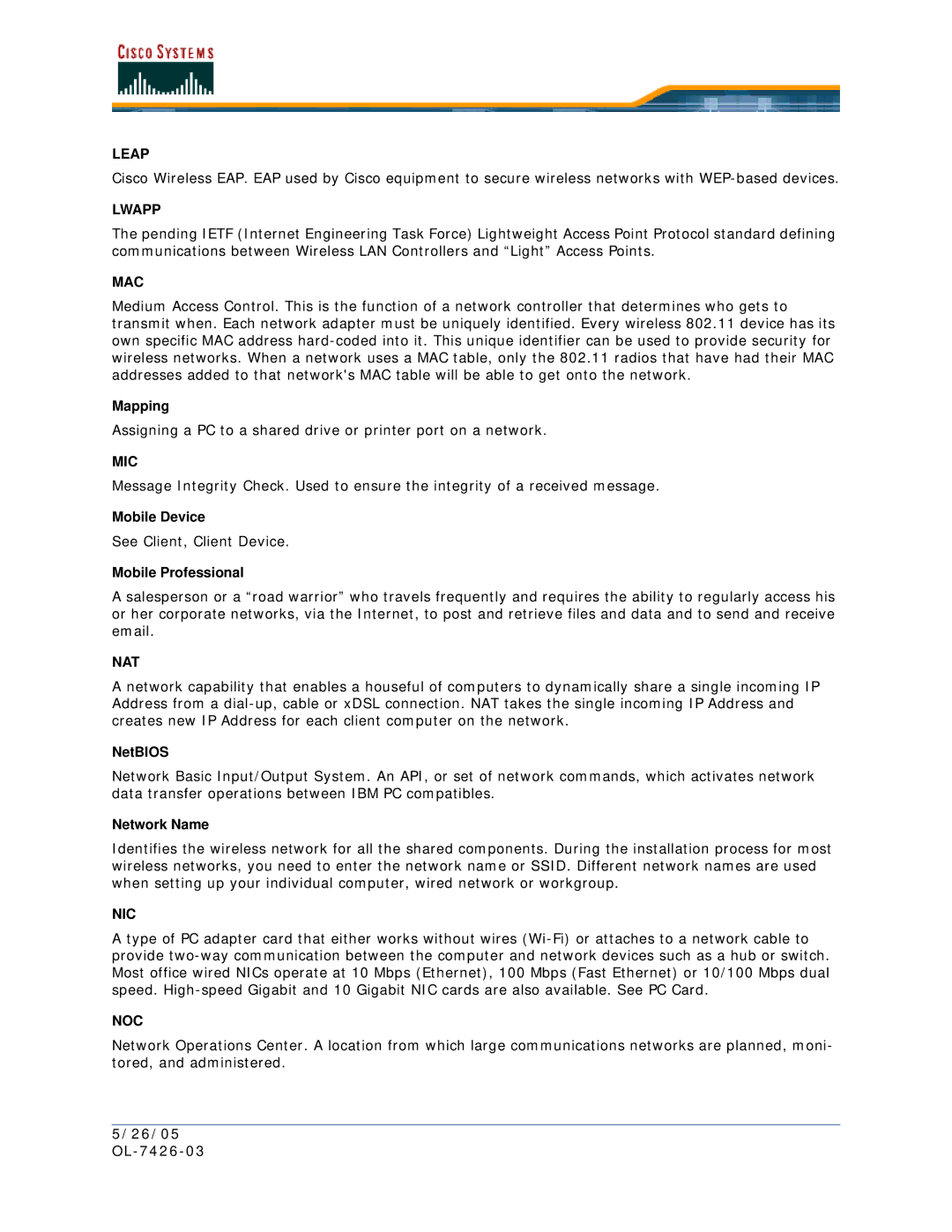
LEAP
Cisco Wireless EAP. EAP used by Cisco equipment to secure wireless networks with
LWAPP
The pending IETF (Internet Engineering Task Force) Lightweight Access Point Protocol standard defining communications between Wireless LAN Controllers and “Light” Access Points.
MAC
Medium Access Control. This is the function of a network controller that determines who gets to transmit when. Each network adapter must be uniquely identified. Every wireless 802.11 device has its own specific MAC address
Mapping
Assigning a PC to a shared drive or printer port on a network.
MIC
Message Integrity Check. Used to ensure the integrity of a received message.
Mobile Device
See Client, Client Device.
Mobile Professional
A salesperson or a “road warrior” who travels frequently and requires the ability to regularly access his or her corporate networks, via the Internet, to post and retrieve files and data and to send and receive email.
NAT
A network capability that enables a houseful of computers to dynamically share a single incoming IP Address from a
NetBIOS
Network Basic Input/Output System. An API, or set of network commands, which activates network data transfer operations between IBM PC compatibles.
Network Name
Identifies the wireless network for all the shared components. During the installation process for most wireless networks, you need to enter the network name or SSID. Different network names are used when setting up your individual computer, wired network or workgroup.
NIC
A type of PC adapter card that either works without wires
NOC
Network Operations Center. A location from which large communications networks are planned, moni- tored, and administered.
